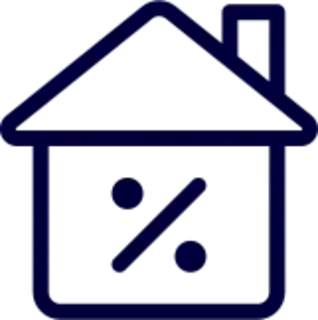What Retirees Should Know Before Tapping Home Equity to Pay for Medical Expenses

Health care costs can be a budget-buster for retirees, even those who have been carefully saving for years. The average 65-year-old retiring this year will spend $172,500 on health care and medical bills, according to an estimate from Fidelity.
That sum is roughly double the amount needed two decades ago, and it’s only likely to keep growing. What’s more, it doesn’t include paid long-term-care services such as home health aides and nursing homes, which as many as 40% of adults will need one day, according to the U.S. Department of Health and Human Services.
While the vast majority of Americans 65 and older have insurance through Medicare, the public health program doesn’t cover everything (like long-term care), leaving many older adults with significant health-related funding gaps. In addition, even seniors covered by Medicare have to pay premiums, deductibles and other expenses.
On the bright side, after decades of homeownership, baby boomers, who are between 61 and 79 years old, are sitting on a lot of wealth — about half the nation’s home equity, according to the Federal Reserve. The median amount of equity for homeowners over 65 surged by nearly 50% between 2019 and 2022, and now tops $250,000, according to the Survey of Consumer Finances.
All that housing wealth gives retirees another asset to consider when managing rising medical costs. Here’s what you need to know about using home equity to pay for health care in retirement.
Pros and cons of using home equity for health care costs
Only 15% of homeowners 60 and older said that they would consider using their home equity to meet financial needs in retirement, according to a 2023 Fannie Mae survey.
But other research suggests that tapping this resource can benefit both your finances and your health. A 2022 study, for example, found older people who borrowed against their home equity were less likely to skip taking medications because they couldn’t afford them. In a follow-up study, researchers found that every $10,000 a homeowner extracted from their equity after being diagnosed with a serious medical condition yielded a statistically significant measure of improvement in the management of their illness.
It’s not necessarily rocket science that people who use their wealth are better able to manage the costs of chronic illnesses, says Stephanie Moulton, a professor at Ohio State University who co-authored both studies. But the findings are important because they show that older homeowners have to be willing — and able — to liquidate their accrued housing wealth.
“Two older adults may have the exact same amount of housing wealth, but the one who can access it through borrowing might end up with better health outcomes than the one who can’t,” she says.
One of the more serious downsides of planning to use your home equity to cover medical expenses in retirement is that you may have trouble actually accessing it. Many older homeowners who would like to unlock the value stored in their homes aren’t approved for home equity borrowing because their incomes are too low, Moulton says.
Another challenge is making sure that your home has retained its appreciated value. Average home prices have risen consistently over the past several years, but that trend is reversing in some places, with certain regions and cities experiencing cooling housing markets. A lower appraised value, especially if you’re still carrying a mortgage, may make it tougher to qualify for a loan.
Perhaps most importantly, most avenues of accessing home equity involve using the place you live as collateral. If you struggle to keep up with your loan obligations, you risk losing your home.
Ways to tap your home equity in retirement
There are two primary ways of unlocking home equity in retirement: You can either sell a home or you can borrow against it.
While selling your home and either renting or buying a more affordable property might not be your first choice, selling is what gives you access to the most liquidity right away, says Anqi Chen, associate director of savings and household finance at the Center for Retirement Research at Boston College.
In terms of borrowing against your home, you could take out a home equity loan or a home equity line of credit (HELOC). The second option is a favorite of financial planners, since it gives you the flexibility to borrow against your equity during a five- to 10-year draw period and only pay interest until after the draw period is over, giving you more flexibility to borrow as you need the money. In both cases, though, you’ll need to make sure you can afford the required monthly payments. And with a traditional HELOC, you need to be prepared for your payment to increase — perhaps significantly — after the draw period ends and you begin paying back both principal and interest. Alternatively, you can look for a lender that offers a HELOC with a fixed, predictable repayment term so it’s easier to plan for what you’ll owe down the line.
If you don’t want to sell your home and are concerned about committing to a traditional loan repayment term, a reverse mortgage may make more sense for you. Neil Krishnaswamy, a certified financial planner in McKinney, Texas, says a reverse mortgage can be a “pretty powerful tool” for older adults who plan to stay in their home for a long time.
“You have a lot of control about when and whether you ever pay it back,” he says. That’s because reverse mortgages don’t come due until you move out of your home (unless you fail to meet the loan terms, like keeping up with property taxes, insurance and home maintenance). You can choose to receive the loan proceeds as a lump sum, regular installment payments or a line of credit to tap as needed.
But a reverse mortgage does typically require that you have sufficient equity in your home. While there’s no hard-and-fast rule, most lenders offering home equity conversion mortgages (HECM) — the most common type of reverse mortgage — require 50% equity. By comparison, you might only need 15% to 20% equity to obtain a home equity loan or HELOC.
Ultimately, there’s no one-size-fits-all recommendation for the best way to tap your home equity for medical expenses. The best option for using your housing wealth will depend on your personal circumstances. “It’s highly dependent on what people want and how much money and liquidity they think they’ll need for retirement,” Chen says.
Her biggest piece of advice? Educate yourself. Retirees tend to underestimate both their future health care needs and how much that care will cost, she says. Knowing more about your risks and the resources available to pay for medical care you’re likely to need can help you make better decisions.
“That can help clarify the options earlier on, so it’s not a surprise later in retirement,” she says.
More from Money:
6 Ways to Get More Money in Retirement
How Much Money Do You Need to Retire? Answer These 4 Questions to Find Out





